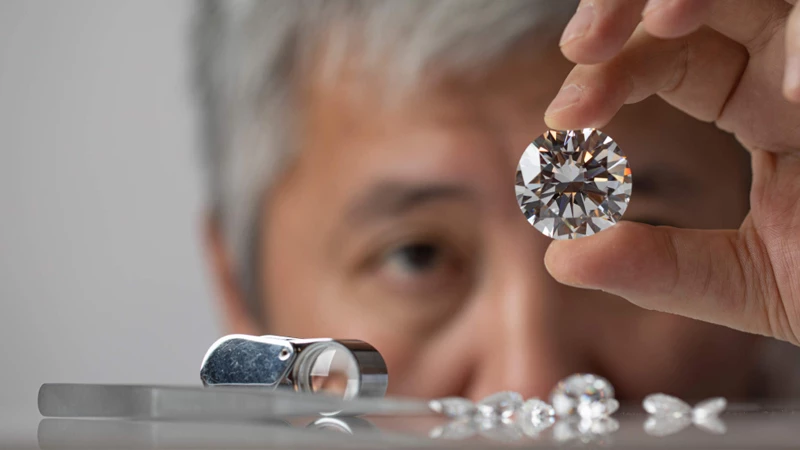Lab-grown diamonds, also known as synthetic or cultured diamonds, have become increasingly popular as an alternative to natural diamonds. They are created in laboratories using advanced technological processes that mimic the natural process of diamond formation. Lab-grown diamonds are chemically and physically identical to natural diamonds, but they are typically less expensive.
There are majorly two ways of creating diamonds in laboratories. One is HPHT and the other one is CVD. In both methods, tiny seeds of natural diamonds are put under specific temperatures and pressure to grow into big diamonds. This process may also include some chemicals as catalysts.
If you are considering purchasing a loose lab-grown diamond, there are a few things you should be aware of.
1. Lab-grown Diamonds Are Not “Fake” Diamonds
Lab-grown diamonds are not fake diamonds. They are real diamonds that are created in a laboratory instead of being mined from the earth. Because lab-grown diamonds have the same chemical and physical properties as natural diamonds, they are graded using the same standards as natural diamonds. The only difference between lab-grown diamonds and natural diamonds is their origin. Natural diamonds are directly obtained from mines, while natural diamonds are created in the laboratory using tiny natural diamonds.
2. Lab-grown Diamonds Are Typically Less Expensive Than Natural Diamonds
One of the main advantages of lab-grown diamonds is their cost. Lab-grown diamonds are typically less expensive than natural diamonds of the same size and quality. This is because they do not require expensive mining operations and heavy equipment. The production process of lab diamonds is more convenient and less labor-intensive. However, the price of lab-grown diamonds can vary depending on the quality and size of the diamond.
3. Lab-grown Diamonds Are Environment-friendly
Mining natural diamonds can have a significant impact on the environment. It can disrupt ecosystems, cause soil erosion, and consume large amounts of energy and water. Lab-grown diamonds, on the other hand, have a much smaller environmental footprint. They do not require mining, and the production process is less resource-intensive. You might also have heard about blood diamonds, they are called so because harassment of human resources is involved in the mining of these types of diamonds. After the introduction of the Kimberley Process, blood diamonds are virtually eliminated from the market but still if you are concerned about the environmental impact in the making of your jewelry, lab-grown diamonds are a good choice.
4. Lab-grown Diamonds Are Not Imitations Or Stimulants
The imitation of diamonds, such as cubic zirconia or moissanite, may look like diamonds but are not chemically or physically identical to diamonds. Simulants to diamonds, such as white sapphire or white topaz, are natural gemstones often used as diamond substitutes. Lab-grown diamonds, on the other hand, are real diamonds created in a laboratory using advanced technology. They are not imitations or simulants and have the same fire, brilliance and hardness as natural diamonds. Both lab-grown and natural diamonds have a hardness score of 10 on the Mohs scale of hardness. This keeps lab diamonds a step ahead of other gemstones that replicate diamonds.
5. Lab-grown Diamonds As An Investment
Like natural diamonds, lab-grown diamonds can look like a good investment in the present times. They are durable and long-lasting elements that hold their value over time. The price of lab-grown diamonds has been steadily increasing over the past few years, and they are expected to continue to increase in value. However, it is important to note that the value of a lab-grown diamond may go down after a point of time because natural and unique things become antique pieces over time which may not be the case with artificial ones.
In conclusion, lab-grown diamonds are a great alternative to natural diamonds. They are real diamonds created in laboratories under a controlled environment. Because of having the same chemical and physical properties as natural diamonds, lab diamonds are being broadly used for industrial purposes. Just like their natural counterparts, lab diamonds can be used for cutting and sharpening hard metals or glasses. Lab-grown diamonds are typically less expensive than natural diamonds. Moreover, lab diamonds are also environment-friendly and a good investment option. If you are considering purchasing a lab-grown diamond, be sure to do your research and choose a reputable seller. Last but not least, do not forget to check authenticating certificates before making a final purchase.


